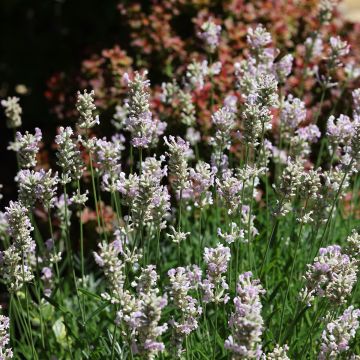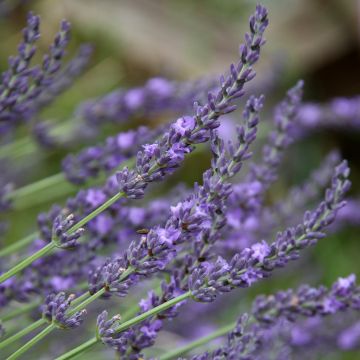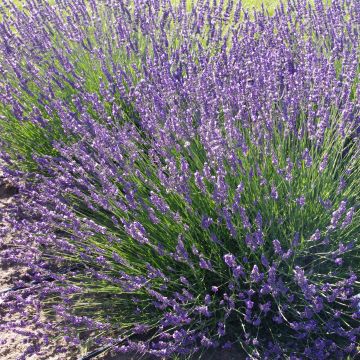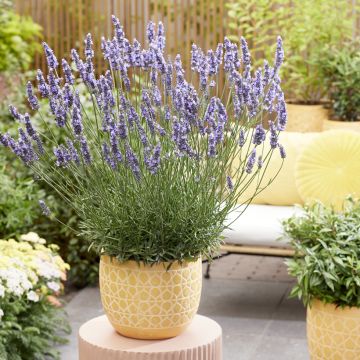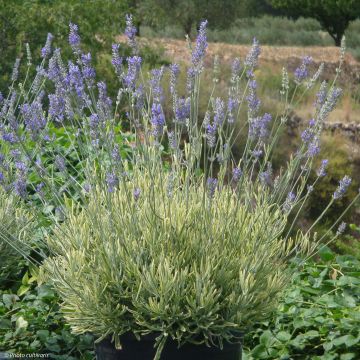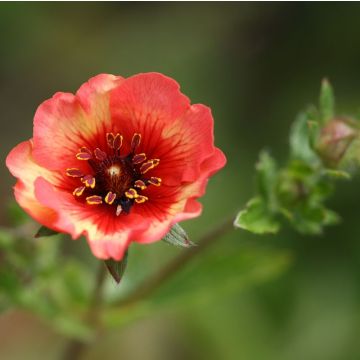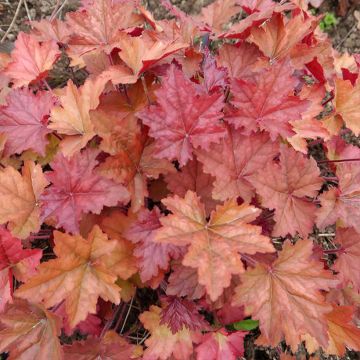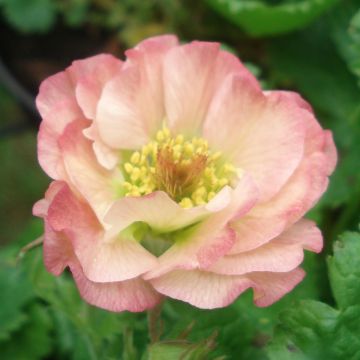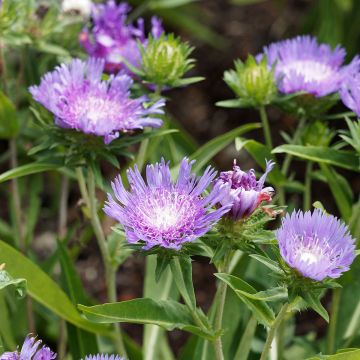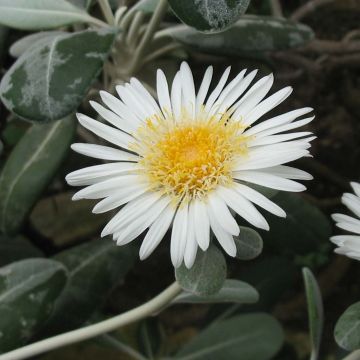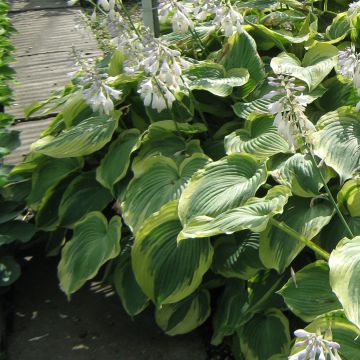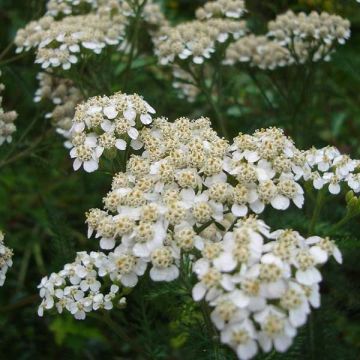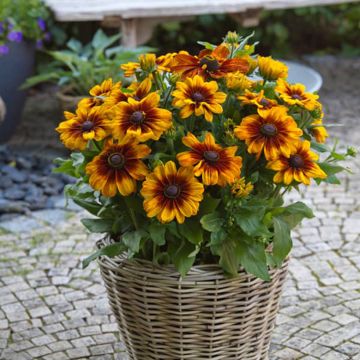Shipping country and language
Your country of residence may be:
Your country of residence is:
For a better user experience on our website, you can select:
Your shipping country:
-
Andorra
-
Austria
-
Belgium
-
Bulgaria
-
Canada
-
Chile
-
Croatia
-
Cyprus
-
Czechia
-
Denmark
-
Estonia
-
Finland
-
France
-
Germany
-
Greece
-
Hungary
-
Iceland
-
Ireland
-
Italy
-
Latvia
-
Lithuania
-
Luxembourg
-
Malta
-
Monaco
-
Netherlands
-
Poland
-
Portugal
-
Romania
-
Slovakia
-
Slovenia
-
Spain
-
Sweden
-
Switzerland
-
United Kingdom
We only deliver seed and bulb products to your country. If you add other products to your basket, they cannot be shipped.
Language:
-
French
-
German
-
Spanish
-
English
-
Italian
My Account
Hello
My wish lists
Log in / Register
Existing customer?
New customer?
Create an account to track your orders, access our customer service and, if you wish, make the most of our upcoming offers.
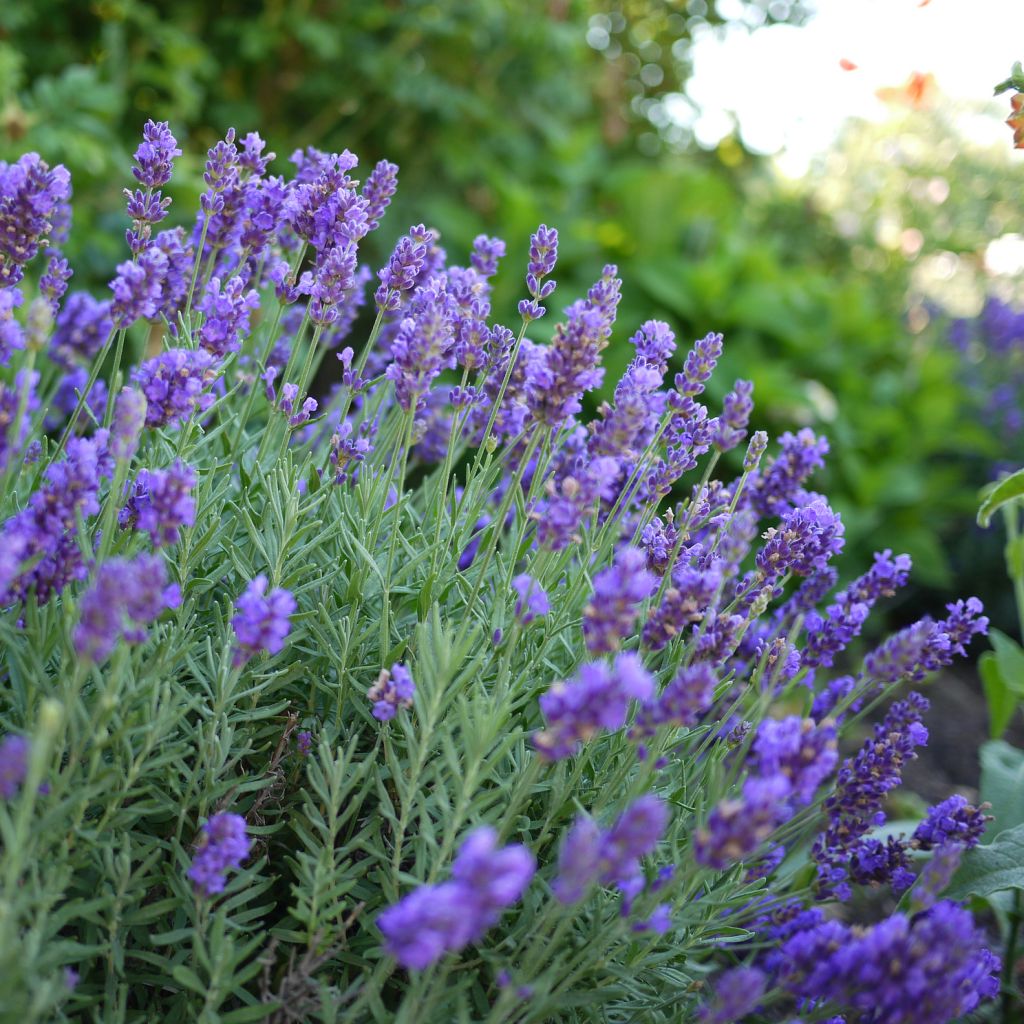

Lavandula intermedia Dutch Group - Lavandin
Lavandula intermedia Dutch Group - Lavandin
Lavandula x intermedia Dutch Group
Lavandin, Dutch Lavender
Received plants in "very good condition" like all the plants previously received.
Pierre le 13/11/24, 13/11/2024
Order in the next for dispatch today!
Dispatch by letter from 3,90 €.
Delivery charge from 5,90 € Oversize package delivery charge from 6,90 €.
More information
This item is not available in your country.
Shipping country:
-
Andorra
-
Austria
-
Belgium
-
Bulgaria
-
Canada
-
Chile
-
Croatia
-
Cyprus
-
Czechia
-
Denmark
-
Estonia
-
Finland
-
France
-
Germany
-
Greece
-
Hungary
-
Iceland
-
Ireland
-
Italy
-
Latvia
-
Lithuania
-
Luxembourg
-
Malta
-
Monaco
-
Netherlands
-
Poland
-
Portugal
-
Romania
-
Slovakia
-
Slovenia
-
Spain
-
Sweden
-
Switzerland
-
United Kingdom
Schedule delivery date,
and select date in basket
This plant carries a 12 months recovery warranty
More information
We guarantee the quality of our plants for a full growing cycle, and will replace at our expense any plant that fails to recover under normal climatic and planting conditions.
From 5,90 € for pickup delivery and 6,90 € for home delivery
Express home delivery from 8,90 €.
From 5,90 € for pickup delivery and 6,90 € for home delivery
Express home delivery from 8,90 €.
Would this plant suit my garden?
Set up your Plantfit profile →
Description
Lavandula intermedia (x) dutch group, a variety of hybrid lavandin, offers an exceptionally long flowering period, from June to September, which is not the case with other varieties. It has slender spikes of light mauve flowers, carried on long stems, somewhat scattered. Its evergreen foliage is magnificent, silvery-gray, dense, highly fragrant in warm climates, giving the plant a mass ball-like appearance, highly decorative in winter and spring. Lavender is synonymous with Mediterranean holidays. It evokes the sun, the song of cicadas, the dry and fragrant hillsides of the Forcalquier region, and it is a piece of this ambiance that we capture in our own gardens. For dry, rocky soils, perfectly drained, in the sun.
The genus Lavandula belongs to the lamiaceae family. This hybrid is obtained by cross-breeding L. angustifolia and L. latifolia. These two species are found in the wild in the same mid-mountain environment and naturally cross-breed. They have given rise to numerous cultivars, all easy to install in the garden, tolerant to limestone. The 'Dutch' hybrid forms a large round cushion, with vigorous vegetation, reaching 1m (3ft) when in bloom, 60cm (24in) for the foliage, and a diameter of 80cm (32in). Its evergreen leaves, wider than those of true lavender, remain gray even in humid climates. They become even more silvery when the soil is dry and the climate is warm. However, in cooler climates, what the plant gains in foliage and robustness, it loses in color and intensity of fragrance. This variety has the longest flowering period, although never very intense. Long thin stems emerge from the massive foliage ball, carrying slender spikes of light mauve flowers, highly melliferous.
There are numerous and varied uses for lavandins. In nature, these plants always live in poor, rocky, dry, perfectly drained environments. With us, it is imperative to offer these evergreen undershrubs the sunniest slope possible, in a poor, very rocky soil, even limestone, and very well-drained in winter. Naturally, they will find their place in the rockery alongside cistus, helianthemums, and artemisias and salvias. Groupings can be created in large, well-drained slopes, planting different varieties of lavender, with volumes, flowering, and foliage creating a variety of mounds. Perennials with dry soil tolerance and vibrant or soft flowering will punctuate the landscape: Linaria 'Canon Went', Salvia jamensis, gaillardias, Hesperaloe parviflora and its red spikes, adding Convolvulus althaeoïdes, a Provençal bindweed that will run everywhere between and within the cushions without suffocating them. A border of lavandins will be more beautiful overlooking a wall, with aubrietas, for example, at its feet.
Report an error about the product description
Lavandula intermedia Dutch Group - Lavandin in pictures
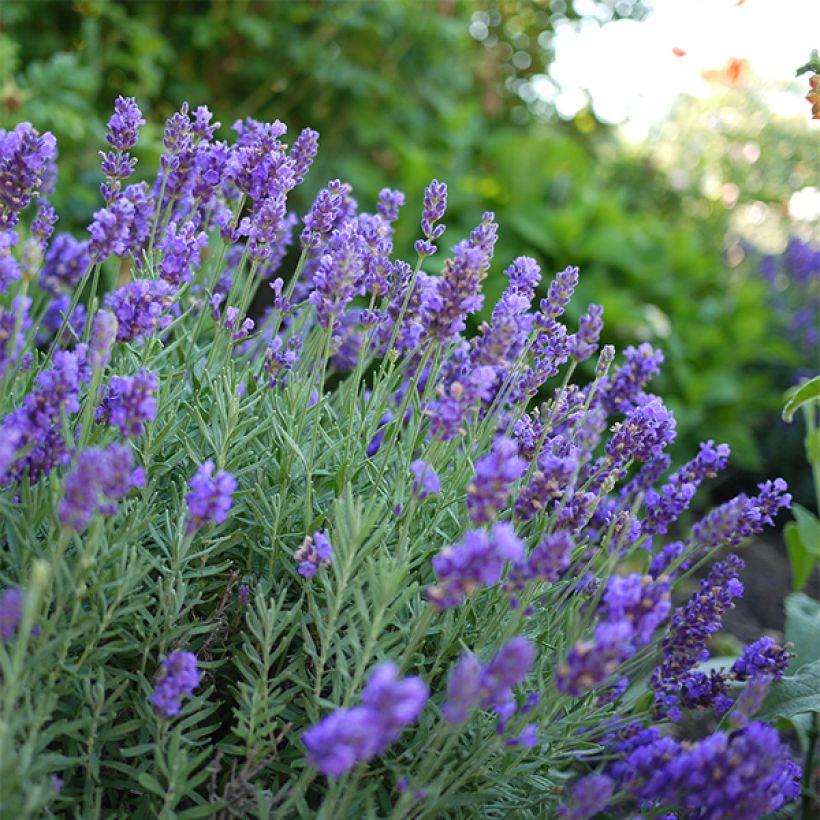



Flowering
Foliage
Plant habit
Botanical data
Lavandula
x intermedia
Dutch Group
Lamiaceae
Lavandin, Dutch Lavender
Cultivar or hybrid
Other Lavandin
Planting and care
Planting period
Intended location
Care
-
, onOrder confirmed
Reply from on Promesse de fleurs
Summer flowering perennials
Haven't found what you were looking for?
Hardiness is the lowest winter temperature a plant can endure without suffering serious damage or even dying. However, hardiness is affected by location (a sheltered area, such as a patio), protection (winter cover) and soil type (hardiness is improved by well-drained soil).

Photo Sharing Terms & Conditions
In order to encourage gardeners to interact and share their experiences, Promesse de fleurs offers various media enabling content to be uploaded onto its Site - in particular via the ‘Photo sharing’ module.
The User agrees to refrain from:
- Posting any content that is illegal, prejudicial, insulting, racist, inciteful to hatred, revisionist, contrary to public decency, that infringes on privacy or on the privacy rights of third parties, in particular the publicity rights of persons and goods, intellectual property rights, or the right to privacy.
- Submitting content on behalf of a third party;
- Impersonate the identity of a third party and/or publish any personal information about a third party;
In general, the User undertakes to refrain from any unethical behaviour.
All Content (in particular text, comments, files, images, photos, videos, creative works, etc.), which may be subject to property or intellectual property rights, image or other private rights, shall remain the property of the User, subject to the limited rights granted by the terms of the licence granted by Promesse de fleurs as stated below. Users are at liberty to publish or not to publish such Content on the Site, notably via the ‘Photo Sharing’ facility, and accept that this Content shall be made public and freely accessible, notably on the Internet.
Users further acknowledge, undertake to have ,and guarantee that they hold all necessary rights and permissions to publish such material on the Site, in particular with regard to the legislation in force pertaining to any privacy, property, intellectual property, image, or contractual rights, or rights of any other nature. By publishing such Content on the Site, Users acknowledge accepting full liability as publishers of the Content within the meaning of the law, and grant Promesse de fleurs, free of charge, an inclusive, worldwide licence for the said Content for the entire duration of its publication, including all reproduction, representation, up/downloading, displaying, performing, transmission, and storage rights.
Users also grant permission for their name to be linked to the Content and accept that this link may not always be made available.
By engaging in posting material, Users consent to their Content becoming automatically accessible on the Internet, in particular on other sites and/or blogs and/or web pages of the Promesse de fleurs site, including in particular social pages and the Promesse de fleurs catalogue.
Users may secure the removal of entrusted content free of charge by issuing a simple request via our contact form.
The flowering period indicated on our website applies to countries and regions located in USDA zone 8 (France, the United Kingdom, Ireland, the Netherlands, etc.)
It will vary according to where you live:
- In zones 9 to 10 (Italy, Spain, Greece, etc.), flowering will occur about 2 to 4 weeks earlier.
- In zones 6 to 7 (Germany, Poland, Slovenia, and lower mountainous regions), flowering will be delayed by 2 to 3 weeks.
- In zone 5 (Central Europe, Scandinavia), blooming will be delayed by 3 to 5 weeks.
In temperate climates, pruning of spring-flowering shrubs (forsythia, spireas, etc.) should be done just after flowering.
Pruning of summer-flowering shrubs (Indian Lilac, Perovskia, etc.) can be done in winter or spring.
In cold regions as well as with frost-sensitive plants, avoid pruning too early when severe frosts may still occur.
The planting period indicated on our website applies to countries and regions located in USDA zone 8 (France, United Kingdom, Ireland, Netherlands).
It will vary according to where you live:
- In Mediterranean zones (Marseille, Madrid, Milan, etc.), autumn and winter are the best planting periods.
- In continental zones (Strasbourg, Munich, Vienna, etc.), delay planting by 2 to 3 weeks in spring and bring it forward by 2 to 4 weeks in autumn.
- In mountainous regions (the Alps, Pyrenees, Carpathians, etc.), it is best to plant in late spring (May-June) or late summer (August-September).
The harvesting period indicated on our website applies to countries and regions in USDA zone 8 (France, England, Ireland, the Netherlands).
In colder areas (Scandinavia, Poland, Austria...) fruit and vegetable harvests are likely to be delayed by 3-4 weeks.
In warmer areas (Italy, Spain, Greece, etc.), harvesting will probably take place earlier, depending on weather conditions.
The sowing periods indicated on our website apply to countries and regions within USDA Zone 8 (France, UK, Ireland, Netherlands).
In colder areas (Scandinavia, Poland, Austria...), delay any outdoor sowing by 3-4 weeks, or sow under glass.
In warmer climes (Italy, Spain, Greece, etc.), bring outdoor sowing forward by a few weeks.
